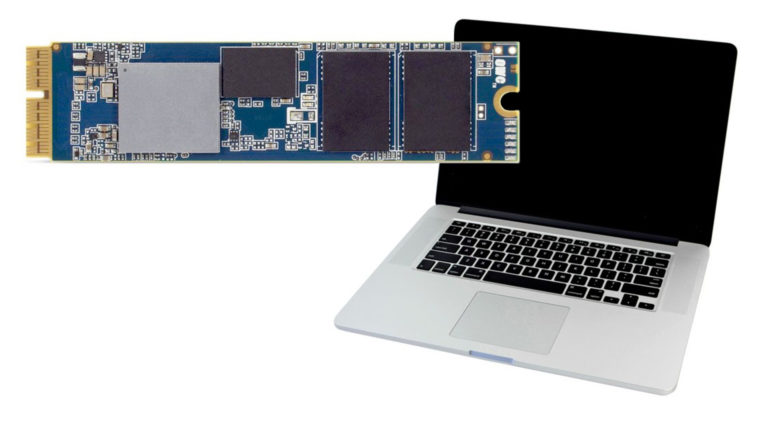Enterprise SSDs Are Putting Pen to a Whole Lot of Paper
As DPs, DITs, and data wranglers, we rely on fast, reliable SSDs to offload original camera footage, whether it’s in the corner of a darkened set, in the back of a truck, or in a lonely hotel room at 2 a.m. We need to perform this critical operation quickly and efficiently, with appropriate checksums, employing robust utility software like Imagine Products ShotPut Pro. We don’t necessarily need the priciest, highest performance SSD around, with a low latency rate and power-loss protection. For most of us, when it comes to SSDs, it’s like putting pencil to paper once in a while. It is not particularly taxing on the pencil, paper, or SSD.

You can read a book a million times and the book will never wear out. The same is true for SSDs. The biggest challenge in any drive is writing to the medium. The more one writes, the more energy and heat that is applied to the semiconductor material, and the faster it degrades. Most drives are warranted for three to five years under maximum writing load. As shooters, we really don’t have to worry about wearing our SSDs out. For post-production folks, however, at a top-tier digital intermediate facility like this one at Technicolor (inset), it’s a different story.
In 2018, Samsung introduced the 64-layer V-NAND 860 PRO SSD, which proved more than adequate for most shooters’ needs, from offloading dailies and creating backups to heavier workloads while still on set — for instance, creating 4K composite scenes inside Blackmagic DaVinci Resolve. The 860 had 4 TB of capacity, featured a new MJX controller, and boasted read/write speeds up to 560 MB/sec, an impressive rate for what is, after all, a relatively modest client PC drive.
Samsung’s 883 DCT SATA SSD is a different animal, intended for heavy-duty server applications or in a data center. While an enterprise drive like the 883 is appropriate for large-scale network streaming operations like Netflix and Amazon, it is also ideal for higher-end post-production facilities that rely on collaborators in production centers around the world who operate 24/7. These editors, animators, compositors, DI operators, and others are pulling heavy data loads from a server, often simultaneously at all hours, for rendering operations.

The Samsung 883 DCT is ideal for heavy-read environments. Upload files once, then stream a slew of downloads to collaborators around the world. Other enterprise drives may be designed for the opposite purpose, writing a lot, as in the case of a bank or financial institution. The 883 is not that type of drive.
In such a high-stakes environment, the sustained performance of a drive is critical. No weird gaps or skips in data transmission or throughput are acceptable. Ordinary client PC drives are not likely to perform well or last long under such stress, as such units are designed to run only intermittently each day, say, 8 hours on and 16 hours off.

Home client drives, like a Glyph Atom RAID that we might use for offloading camera dailies, can be designed simply and economically since the writing load is so low.
Enterprise drives like the 883 are a bit pricier and should be, as they are intended for non-stop operation. As in the case of a pen and paper, one can read from the paper perhaps millions of times with little apparent wear and tear, but too much writing to the paper, over and over again, under heavy load, will erode the “paper” — in this case, the memory material, or controller — and eventually destroy it. The Samsung 883 DCT is intended for such grueling processes as post-production accessing a common server, with one team, say, working on storyboarding in Burbank, another team in Kuala Lumpur performing color grading operations, and another team somewhere else executing the overall rendering.
Unlike the typical SSD a shooter may use for storage of original camera files, the more sophisticated SSDs used by post-production folks — everyone from editors and DI operators to animators and VFX artists — are network-savvy, with a low latency rate. Minimal latency, as close to zero as possible, ensures glitch-free simultaneous throughput of multiple 4K (or higher) resolution video streams in post-production timelines.

The V-NAND stacks 64 cell layers vertically over one another rather than trying to fit itself onto a fixed horizontal space, in order to provide high density and performance with a small footprint. The Samsung 883 DCT is capable of achieving very high transfer speeds. In the event of a power interruption, an integrated tantalum capacitor provides sufficient time to transfer cached data in the DRAM to the flash memory.
Enterprise drives like the Samsung 883 DCT typically feature some kind of built-in power loss protection. It is not uncommon in a busy, bustling facility for a careless tech or office assistant to inadvertently yank out a cable or open a server box. It happens, probably more than we care to admit. In the event of a power interruption, a large tantalum capacitor in the 883 gives the drive the extra power it needs to quickly drain the DRAM and transfer the data to flash memory before finally shutting down.
Another big reason that post-production facilities opt for an enterprise drive is the ability to control and update as necessary multiple units’ operating parameters. A typical server or storage box may contain 24 or more drives, so facilities can benefit from software that can efficiently manage the SSD array with respect to firmware updates, storage allocation, and provisioning. In contrast, the multiple drives in a home client server must be managed and updated individually, drive-by-drive — hardly a convenient process.
Overprovisioning
Continuously moving data around in large volumes will eventually wear out any drive, so some provisioning or overprovisioning is usually required to reduce the likelihood of a catastrophic failure. This allocated space in an SSD dictates to a large extent the drive’s endurance, which unfortunately, also reduces the drive’s overall storage capacity. While most data center drives are typically set to 7%, some facilities may opt for greater provisioning up to 21% in stressful applications requiring very heavy writing loads. As SSD chip density increases from 256Gb to 512Gb, and eventually to 1Tb per cell, the need for overprovisioning will be reduced, which will help preserve an SSD’s absolute storage capacity.









